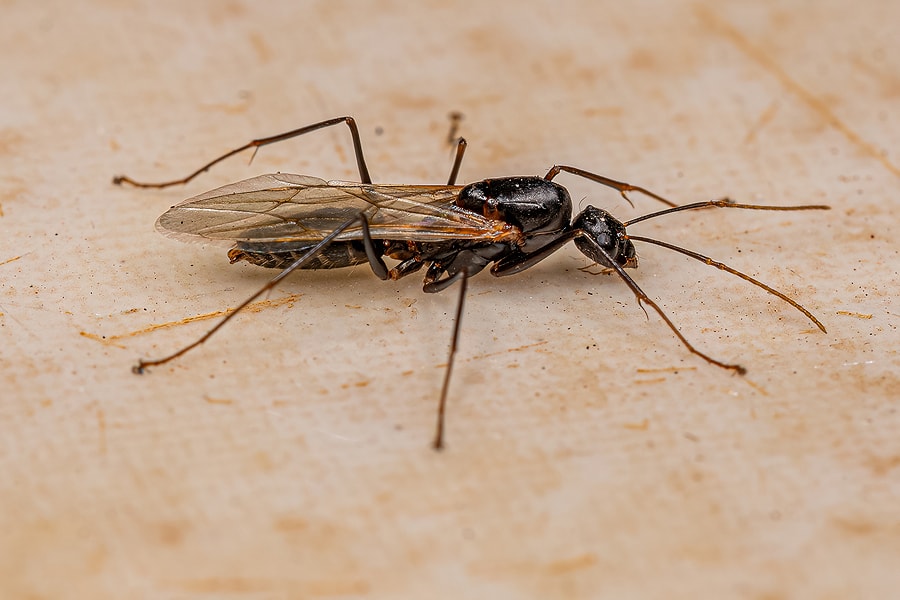READY TO GET STARTED?
REQUEST A FREE ESTIMATE
Fill out the form below or call (888) 466-7849 for a free, no-obligation estimate.

Carpenter ants and termites can wreak havoc on the wood frame of your home. Prevention and treatment depends on which species you are dealing with. How can you tell the difference between these two winged insects? Here we look at the differences in carpenter ants vs termites, along with how to eliminate them.
Carpenter ants (Camponotus) and termites (Isoptera) have many similarities, including the fact that both are infamous for causing wood damage in homes. Aside from the size of their wings during reproduction, termites are nearly the same size as the several species that make up the carpenter ant group; and, like carpenter ants, termites burrow into wood, allowing them to destroy your home’s wood frame. Because both carpenter ants and termites swarm in the spring to mate, homeowners who observe the swarms frequently confuse them.
Ants and termites have quite different lifespans—termites live longer because of their lengthy life cycle. While the queen carpenter ant can live for up to ten years, male carpenter ants marry and then die within a few months, if not weeks. Ants have four life stages: egg, larva, pupa, and adult. Termites, on the other hand, have a longer lifespan: the queen can live for more than 30 years, while worker and soldier termites live for one to two years and swarmers, aka reproductive termites, live for three to four years. Termites have a lengthier life cycle than ants, with five stages consisting of egg, larva, nymph, molt, and adult.
Termites can do more damage to homes than carpenter ants, causing major damage when left undetected for long periods of time. Carpenter ant damage can take years to develop and is usually easier to notice because these ants congregate in moist locations and can be seen darting around.
A closer examination of the pest in question reveals substantial physical distinctions that make it easy to distinguish between termites and carpenter ants. Examine the insect closely with a magnifying lens, or shine a bright light on it and use your naked eye.
The two insects interact with wood in various ways. Termites, for example, consume the wood in which they nest. Carpenter ants excavate their nests by digging into the wood; they do not eat the wood but rather push it out via holes in their colonies’ galleries. If you observe small heaps of wood shavings or frass (insect excrement) below the holes, it can help you identify a carpenter ant infestation. Carpenter ants prefer moist and damaged wood in which to build their nests, whereas termites will munch right through healthy wood.
Another noticeable difference is the appearance of the wood tunnels. Carpenter ant tunnels and galleries will be smooth and finished, whereas termite galleries will be rough and ragged because they are filled with layers of soil and mud.
Finally, the presence of mud tubes can help you identify which pest you are dealing with. A mud tube shows the presence of termites, either currently or previously. These are tubes that are created on the outside of walls or between earth and wood to serve as routes for termites.
Because carpenter ants and termites are so different, effective control strategies for each are likewise different. Carpenter ants can often be handled by removing the conditions that attracted them, but a termite infestation would usually necessitate a termite control expert. If you have a problem with either of these winged insects in or around your home, contact your local pest control company for an evaluation.
Categories